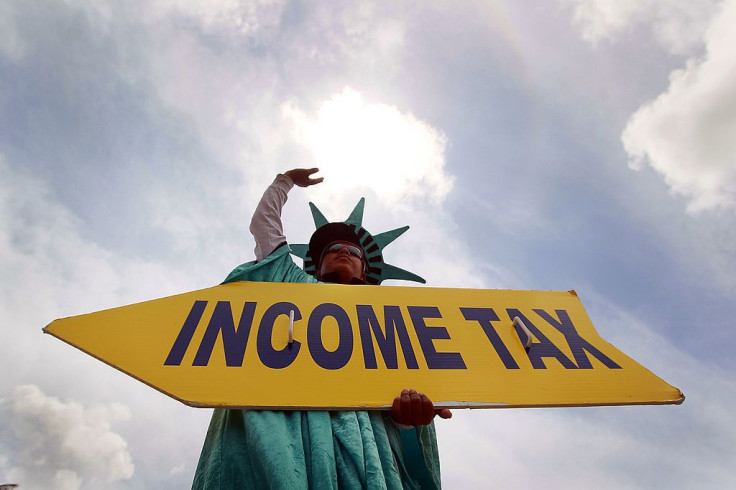Alexandria Ocasio-Cortez's 70% Tax Plan: What All Americans Need To Know

Though she was only sworn into Congress three weeks ago, Representative Alexandria Ocasio-Cortez (D-NY) has already received national attention for her recent proposal of a sky-high 70% marginal tax rate on the highest earners in the United States.
At first, such a high tax rate may sound like a radical idea, but it's not unprecedented, and many Americans don't fully understand how it would affect them -- if at all. With that in mind, here's a rundown of Ocasio-Cortez's proposal, how it compares to previous tax policies, and what it could mean for your tax bill.
What AOC is proposing
The short version is that Alexandria Ocasio-Cortez is proposing a new 70% tax bracket on income above $10 million. The increased tax on the wealthy would fund what Ocasio-Cortez calls a "Green New Deal," which would combat both climate change and economic inequality.
Unsurprisingly, this has attracted lots of attention from both ends of the political spectrum. Some agree with the proposal. Some think it's ludicrous and fear it would derail economic growth. Others think the rich should certainly pay more, but that the addition of a single super-high tax bracket isn't the best solution.
And, like most tax proposals put forth by politicians, this one is misunderstood by much of the American public.
This would be a marginal tax rate
The most common misunderstanding surrounding Ocasio-Cortez's plan is that she is proposing a 70% tax on all income. Nothing could be further from the truth.
Here's the one-minute version of how the U.S. income tax system works. We use a system of so-called marginal tax brackets. Under current law, there are seven 2019 tax brackets, with tax rates of 10%, 12%, 22%, 24%, 32%, 35%, and 37%.
The exact income thresholds of each tax bracket depend on your filing status, but if you're a married couple filing a joint tax return, here's how it would work in 2019. You would pay the lowest (10%) rate on your first $19,400 of taxable income, regardless of how much you made. Then, you'd pay the 12% rate on income between $19,400 and $78,950, while the other brackets would only apply to even higher portions of your income. The top rate (37%) would only be assessed on income above $612,350.
As an example, a married couple filing jointly with taxable income of $100,000 would fall in the 22% tax bracket for 2019. But they would pay 10% on the first $19,400, 12% on the next $59,550, and 22% on the remaining $21,050. Their total income tax would be $13,717, which is only 13.7% of their taxable income -- a full 8.3 percentage points lower than their marginal tax rate.
So, here's what taxpayers need to keep in mind: Even if Ocasio-Cortez's 70% tax bracket were implemented, Americans who earn more than $10 million per year would only pay 70% on income above $10 million. The rest of their income would be taxed at the lower, existing tax brackets.
Also bear in mind that this would only apply to taxable income in excess of $10 million. That means if a taxpayer had $12 million in gross income and claimed $2 million in deductions (such as large charitable donations), he or she would not be affected by the new tax bracket.
An example of how this would work
For the sake of illustrating this, let's consider an example. We'll say that a wealthy married couple has $15 million in taxable income in 2019, and they file a joint tax return.
Under the current marginal tax bracket system, this couple would owe federal income tax of $5,488,140, which translates to 36.6% of their taxable income. On the other hand, if their income in excess of $10 million were taxed at a 70% rate instead, their federal tax bill would rise to $7,138,140, which would be 47.6% of their taxable income.
So, would it be a tax increase? Absolutely, and a substantial one. Would they pay anything close to 70% of their total income? Nope.

A brief history of U.S. tax brackets
A 70% marginal tax rate may sound extremely high, and compared to today's tax brackets, it is. However, it wouldn't be unprecedented by any means. As Ocasio-Cortez puts it:
You look at our tax rates back in the '60s, and when you have a progressive tax-rate system, your tax rate, let's say, from $0 to $75,000 may be 10% or 15%, etc. But once you get to the tippy tops on your 10 millionth dollar, sometimes you see tax rates as high as 60% or 70%.
You don't even have to go back quite that far to find high top tax brackets. The top marginal tax rate was 70% as recently as 1981, applying to taxable income greater than $215,400 for married couples ($595,032 in today's dollars). And the tax structure was far more complex in previous eras. In 1978, most taxpayers had 26 different tax bracketsthat could be applied to their taxable income.
Further, 70% isn't even close to the highest marginal tax rate in our history. As recently as 1963, the top marginal tax rate was a staggering 91% on taxable income greater than $400,000 ($3.28 million in today's dollars) for married couples filing jointly. And finally, if you were curious, the highest marginal tax rate in our history was 92%, which was in effect for the top earners in 1952 and 1953.
Did higher tax rates translate to more revenue?
The short answer: Not really. It's also important to mention that back when the highest tax brackets were 70% or higher, tax avoidance by the rich was a much more widespread practice. In other words, the highest earners went further out of their way to lower their taxable income through loopholes and other mechanisms.
There were also far more tax shelters back then for wealthy taxpayers to take advantage of. For example, many high earners would use depreciation of real estate investments to reduce their taxable income to zero -- a practice that isn't allowed today. There were also looser standards for which income qualified for long-term capital gains tax rates, which are much lower than the rates on most sources of income.
In practice, very few taxpayers actually paid the highest rates. In a recent opinion piecefor The Wall Street Journal, Peter Schiff pointed out that in 1958, there were six different tax brackets with marginal tax rates of 81% or higher, and they kicked in at income greater than $140,000 (about $1.2 million today) for married couples. According to IRS records, though, just 0.02% of all taxpayers had any income taxed at these higher rates.
How would AOC's proposal affect you?
Unless you earn over $10 million annually, your tax bill wouldn't be affected by Ocasio-Cortez's proposal at all. And even if you're one of the lucky 0.01% of Americans who earn more than $10 million, your income tax wouldn't jump to 70%; the top rate would only apply to your taxable income beyond $10 million.
This article originally appeared in the Motley Fool.
The Motley Fool has a disclosure policy.





















